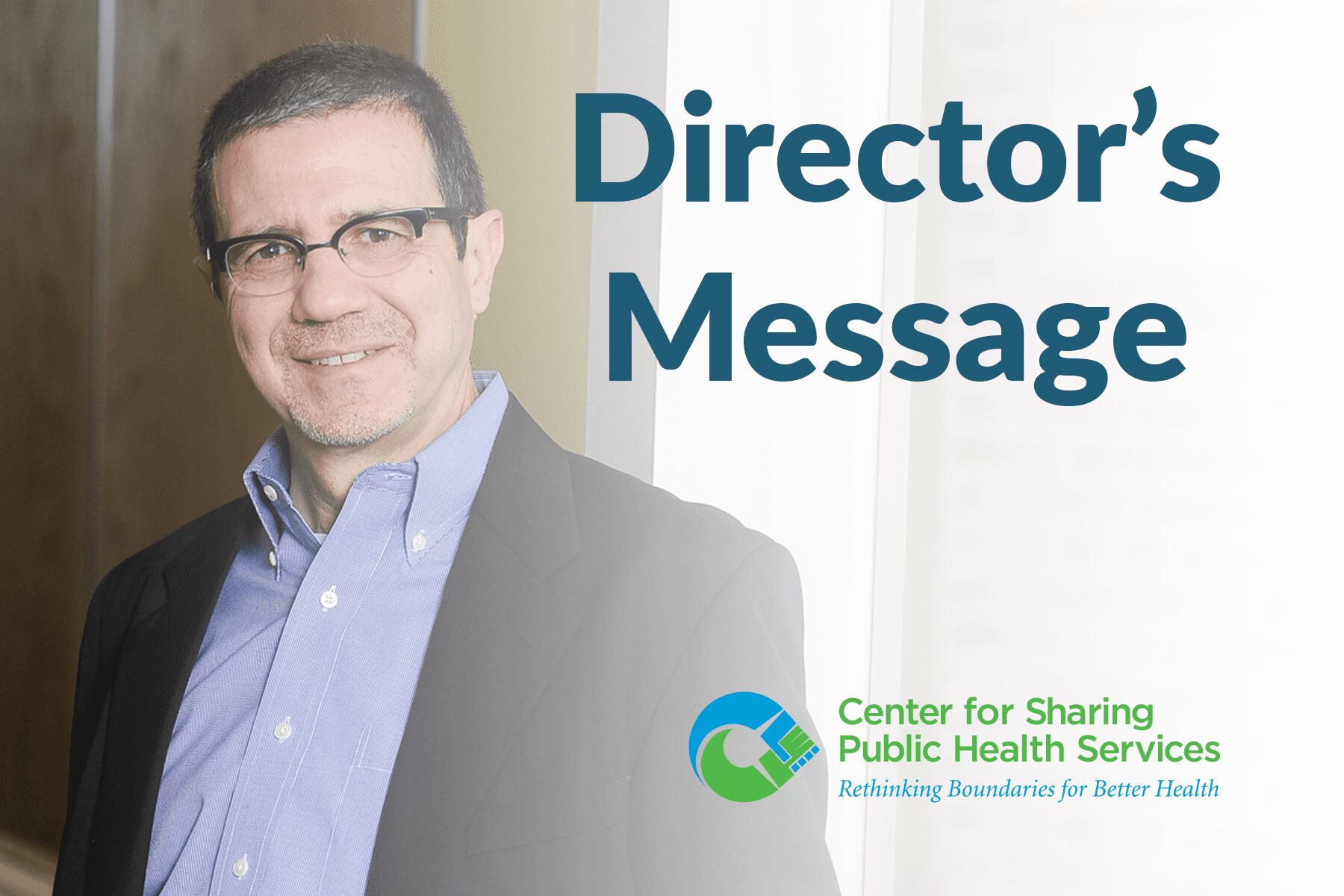A Message from the Director of the Center for Sharing Public Health Services
Since 2012, cross-jurisdictional sharing (CJS) has been the cornerstone of the Center’s work. CJS remains at the heart of our work today, and it’s with excitement that I share the work we have been doing the last few months to reimagine what CJS looks like in the current public health landscape.
A lot has happened in the last decade, including efforts to advance health equity, foundational public health services and Public Health 3.0. We know that our model needs to evolve to remain relevant to public health today. This Director’s Message breaks down changes to our CJS model and the work we do at the Center. We hope you’ll agree that this is a move in the right direction, and as always, we welcome your feedback.
Then & Now
Our language around CJS has evolved before: from our original definition in 2013, to an updated version in 2019, to the current iteration we’re releasing this year.
- CJS in 2019: “When jurisdictions, such as cities or counties and sometimes states, come together and share resources across their respective boundaries to efficiently and effectively deliver public health services.”
- CJS now: “When partners share resources across their respective organizational boundaries (e.g., population served, service area, district, or geopolitical jurisdictions) to improve organizational capacity, address public health issues more effectively and efficiently, advance health equity and address problems that cannot easily be solved by a single organization or jurisdiction.”
What’s Changed?
New Partners: Originally, the work of the Center was focused on sharing arrangements between governmental public health agencies (e.g., state and local health departments). Now, we’ve expanded our scope to explore the role of public health in sharing resources with other government or non-government entities. Some of these entities may not directly provide public health services, but their work may support directly or indirectly the work of public health agencies. This includes entities like schools, health centers or social service providers. Many public health issues cannot be easily solved by a single entity, and this has become increasingly apparent with the recognition of the role that “place” factors (i.e., the social determinants of health) have on health outcomes. Involving more partners in resource sharing expands the potential impact public health can have on population health.
Definition of Jurisdictions: In earlier definitions of CJS, jurisdictional boundaries were focused on “geopolitical boundaries,” which separate political units like cities or counties. Today, our concept of jurisdiction has expanded to encompass virtual “boundaries” beyond the geopolitical, such as service areas, districts and populations served. In recognizing the need to engage new partners (described above) our definition has shifted to acknowledge the “jurisdictions” of these new partners.
Focus on Equity: Advancing health equity includes providing everyone with a fair and just opportunity to be as healthy as possible, regardless of race, ethnicity, disability, gender identity, sexual orientation, or socioeconomic status. In the new definition, we affirm our commitment to equity, as well as our belief that resource sharing is one strategy to advance health equity. We are currently exploring the role of CJS in promoting health equity via our 2020 small grantees, whose projects were designed to use CJS to advance health equity.
What’s the Same?
Resource Sharing: Sharing resources — such as staff, expertise, equipment, funds or programs — is still a fundamental element of our Center and how we define CJS.
Multiple Jurisdictions: While our definition of jurisdictions has shifted, CJS still requires the participation of two (or more) organizations serving different “jurisdictions” (as defined above).
Effectiveness & Efficiency: Improving effectiveness (enhancing the quality of existing services or increasing capacity) and efficiency (maximizing the value of each dollar invested) remain hallmarks of the “why” behind CJS. By sharing resources, partners can be better equipped to deliver public health services effectively and efficiently.
The Role of Governmental Public Health: Although non-governmental organizations will be critical in advancing population health goals through CJS and other forms of collaboration, the work of the Center is still primarily focused on exploring the role of governmental public health agencies in sharing resources, recognizing the continued value public health agencies provide to their communities.
What’s Next?
Forthcoming Director’s Messages will explore these changes in more detail, including a revamp of our flagship documents to reflect our new definition and scope. Be sure to check back for those columns, and we welcome any feedback you’d like to share about our new direction and definition. You can reach us at phsharing@khi.org.
— Gianfranco Pezzino, Director
